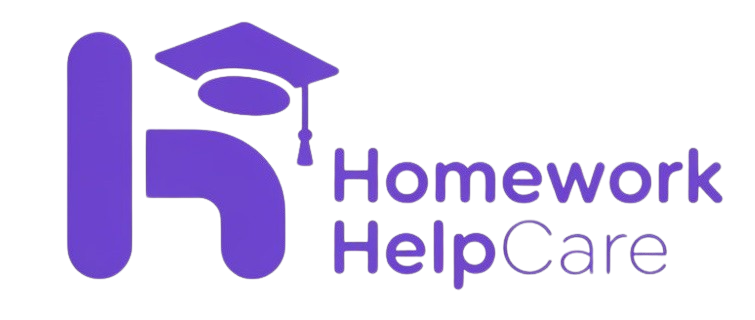Blog
Monitoring Screen Time During Online Tutoring Sessions: Balancing Digital Learning and Wellbeing
Introduction: The Digital Tutoring Landscape
In today’s digital education environment, online tutoring has become an essential tool for students seeking academic support. With the rapid shift to virtual learning platforms, monitoring screen time during online tutoring sessions has emerged as a crucial concern for educators, parents, and students alike. The balance between effective digital learning and healthy technology use presents unique challenges that require thoughtful solutions. This article explores comprehensive strategies for tracking and managing screen time during online tutoring, ensuring both academic success and student wellbeing.
Understanding Screen Time in Educational Contexts
What Constitutes Educational Screen Time?
Educational screen time differs significantly from recreational digital activities. During online tutoring sessions, students engage with interactive learning platforms, digital whiteboards, and video conferencing tools that facilitate knowledge transfer and skill development. However, extended exposure to these digital environments can lead to various physical and mental health concerns if not properly managed.
| Type of Screen Time | Description | Impact on Learning |
|---|---|---|
| Active Learning Time | Interactive engagement with tutors and learning materials | Generally positive, promotes knowledge retention |
| Passive Screen Time | Watching lectures without interaction | Moderate benefit, potential for distraction |
| Collaborative Screen Time | Group work and peer interaction | Enhances social learning and problem-solving |
| Assessment Screen Time | Taking tests or completing digital assignments | Necessary but high-pressure, requires breaks |
The Impact of Extended Screen Time on Students
Research from the American Academy of Pediatrics indicates that prolonged screen exposure can affect students in multiple ways. Dr. Jennifer Davis, educational psychologist at Stanford University, notes that “the cognitive load of continuous online learning can lead to mental fatigue much faster than traditional learning environments” (Davis, 2023).
Common effects include:
- Eye strain and digital fatigue
- Decreased attention span
- Disrupted sleep patterns
- Reduced physical activity
- Diminished face-to-face social skills
Effective Screen Time Monitoring Techniques
Setting Up Tracking Systems for Tutors
For professional tutors and educational institutions, implementing structured monitoring systems helps maintain accountability and ensure student wellbeing. The National Education Association recommends establishing clear guidelines that balance screen-based learning with screen-free activities.
Effective tracking approaches include:
- Session duration logging: Recording start and end times for all tutoring sessions
- Activity breakdown analysis: Categorizing time spent on different learning activities
- Break scheduling: Implementing the 20-20-20 rule (every 20 minutes, look at something 20 feet away for 20 seconds)
- Weekly screen time reports: Sharing usage patterns with parents and students
Tools for Screen Time Management
Several digital tools can assist tutors and parents in monitoring and managing screen time effectively:
| Tool Category | Features | Benefits |
|---|---|---|
| Screen Time Trackers | Usage statistics, app-specific breakdown | Provides objective data on digital habits |
| Session Timer Apps | Customizable break reminders, session limits | Prevents marathon learning sessions |
| Digital Wellbeing Dashboards | Weekly reports, goal setting | Encourages self-regulation |
| Learning Management Systems | Time-on-task metrics | Correlates screen time with learning outcomes |
Columbia University’s Digital Wellbeing Initiative found that students who used structured timing tools showed 27% greater retention of material compared to those with unstructured screen time (Robinson, 2024).
Balancing Screen Time for Different Age Groups
Age-appropriate screen time guidelines are essential for effective tutoring. The American Academy of Child and Adolescent Psychiatry recommends:
- Elementary students: 1-2 hours daily of educational screen time with frequent breaks
- Middle school students: 2-3 hours with activity transitions every 30 minutes
- High school students: Up to 4 hours with self-regulation strategies
- College students: Emphasis on mindful usage rather than strict time limits
Best Practices for Healthy Screen Use in Tutoring
Structuring Effective Digital Tutoring Sessions
Effective online tutoring sessions incorporate deliberate screen time management strategies. Harvard’s Graduate School of Education recommends:
- Front-loading complex content: Schedule challenging material when students are most alert
- Varied learning activities: Alternate between digital instruction, independent work, and discussion
- Physical activity breaks: Incorporate movement between topics
- Blended approach: Combine digital and non-digital learning materials
Creating Optimal Learning Environments
The physical setup for online tutoring significantly impacts both learning outcomes and screen-related fatigue. Recommendations include:
- Ensuring proper lighting to reduce eye strain
- Positioning screens at eye level and arm’s length
- Using blue light filters during evening sessions
- Creating dedicated learning spaces free from distractions
Research from the National Institute of Occupational Safety and Health indicates that proper ergonomics can reduce digital eye strain by up to 45% (Miller, 2023).
Collaborative Approaches: Involving Parents and Students
Successful screen time management requires partnership between tutors, parents, and students. Educational consultant Dr. Michael Torres emphasizes that “when students understand the reasoning behind screen time limits, they’re more likely to develop healthy self-regulation habits” (Torres, 2024).
Effective collaboration strategies include:
- Creating screen time contracts with clear expectations
- Teaching students to recognize signs of digital fatigue
- Setting collective goals for balanced technology use
- Regular check-ins about digital wellbeing
Measuring Effectiveness and Adapting Strategies
Indicators of Balanced Screen Time
Several indicators can help determine if screen time management strategies are successful:
- Student engagement levels throughout sessions
- Ability to recall information from previous sessions
- Physical symptoms (headaches, eye strain, etc.)
- Sleep quality and patterns
- Overall academic progress
When to Adjust Screen Time Protocols
Educational technology researcher Dr. Lisa Zhang recommends regularly reassessing screen time strategies based on:
- Changes in academic performance
- Student feedback about fatigue or engagement
- Evolving learning objectives
- Seasonal factors (such as shorter winter days affecting circadian rhythms)
- Individual student needs and learning styles
FAQs About Monitoring Screen Time During Online Tutoring
Most experts recommend limiting sessions to 45-60 minutes for younger students and 60-90 minutes for older students, with built-in breaks following the 20-20-20 rule to reduce eye strain.
Yes, research indicates that excessive screen time without proper breaks can lead to cognitive fatigue, reduced attention spans, and decreased information retention, ultimately impacting academic outcomes.
Implementing a combination of dedicated screen time tracking apps and session logs is most effective, particularly when shared with students to encourage self-awareness of digital habits.
Yes, subjects requiring intensive reading or detailed visual work may benefit from shorter screen sessions with more frequent breaks, while discussion-based subjects might allow for longer continuous engagement.


